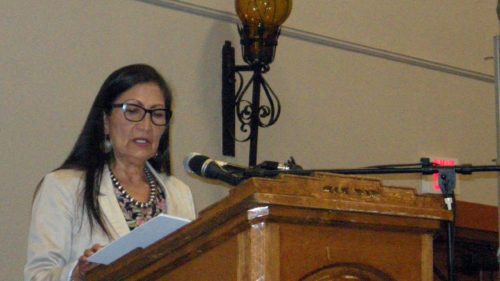With the occupation of the Malheur National Wildlife Refuge a number of Constitutionally-based legal arguments have found their way into the discourse. The arguments being used by the militants, and those who support them, fly in the face of nearly 200 years of settled law. Choosing their limited interpretation of the U.S. Constitution, the proponents of land seizure (it’s no longer a transfer) thumb their noses at the very document they pretend to uphold by carrying it around in their pockets.
The argument of the Malheur militants and those like them is three-fold. First, they argue that the Property Clause (Art IV, Sec 3, Cl 2) limits the authority of the federal government to own land. Second, they argue that the Equal Footing Doctrine may be used to uphold state authority in the face of federal overreach. Third, they argue that the Enclave Clause (Art I, Sec 8, Cl 17) acts as a geographic limit to the amount of land the federal government may own (10 mi. sq.)
This interpretation of the Constitution is flight of fancy founded mostly on the Lost Cause myth propagated by the side that lost the Civil War. The Malheur militants’ interpretation questions bedrock principles of the nation (i.e. the Supreme Court’s authority to interpret the Constitution) and instead substitutes pure fiction couched in legal language to make them sound convincing. I am left to wonder if any of the militants, or these “lawyers” who speak for them have ever read a single case.
First, the militants’ interpretation of the Constitution not only denies the long-settled interpretation of federal authority over public lands, but it seems to deny the principle of judicial review of the Constitution. Judicial review of statutes has been the foundation of federal law since the 1803 decision in Marbury v. Madison.Challenging this fundamental principle is akin to offering a challenge to the legitimacy of the very document the militants claim to uphold.
Second, the challenge to federal authority based on a skewed reading of the Property Clause is inconsistent with nearly 200 years of settled legal interpretation. Since 1840, the Supreme Court has ruled that the federal government has nearly limitless authority over public lands under the Property Clause. In U.S. v. Gratiot, the Court ruled that the federal government was under no obligation to give away public lands. In 1890, the Court further ruled that the federal government had authority over adjacent nonfederal lands if activities on those lands would impact federal lands (Camfield v. U.S.). In 1911, the Court ruled that ranching on public lands without a permit was illegal despite the fact that such action was consistent with state law (Light v. U.S.). Six years later, the Court applied the same reasoning in deciding that a power company lacked authority to build a dam on federal lands (Utah Power and Light v. U.S.). Finally, in the 1976 decision in Kleppe v. New Mexico, the Court rejected New Mexico’s claim that it could assert title to wild horses protected under a federal act. In all of the above cases, the Supreme Court described federal control of public lands and associated resources as “without limit” and rejected state claims to authorize private action inconsistent with federal rules. In short, federal authority under the Property Clause is as settled a principle as there is in the law.
Claims that the Equal Footing Doctrine may be relied upon as an exemption from federal authority are equally baseless. In 1963, the Supreme Court limited the use of the equal footing doctrine by stating definitively that the only way, post-statehood, for states to receive title to federal lands not submerged was through an express grant by the federal government (Arizona v. California).
Finally, the Enclave Clause of the Constitution is a favorite of land transfer militants. Supporters argue that the Clause limits the amount of land the federal government may own to the ten square miles of Washington D.C. As the Property Clause discussion clearly demonstrates, nothing could be further from the truth. The Enclave Clause is really more about governmental jurisdiction than ownership. The federal government can have an enclave in which much of the territory is titled to private parties—as is true of Washington, D.C. It’s just that in an enclave, federal rather than state jurisdiction is supreme.
As should be clear, the Constitutional arguments of land transfer militants are more than just the product of a fevered imagination, they are dangerous to the very foundations of the nation.
Todd Leahy, our Conservation Director, is an environmental attorney and has a PhD in American Indian History.
Download the PDF here: Public Lands and the Constitution.pdf
Back to news



